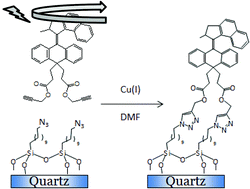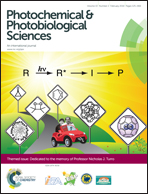An ultrafast surface-bound photo-active molecular motor†
Abstract
We report the synthesis and surface attachment of an ultrafast light-driven rotary molecular motor. Transient absorption spectroscopy revealed that the half-life of the rate determining thermal step of the rotary cycle in solution is 38 ± 1 ns, the shortest yet observed, making this the fastest molecular motor reported. Incorporation of acetylene legs into the structure allowed the motors to be grafted to azide-modified quartz and silicon substrates using the “click” 1,3-dipolar cycloaddition reaction.

- This article is part of the themed collection: Dedicated to the memory of Prof. Nicholas J. Turro

 Please wait while we load your content...
Please wait while we load your content...